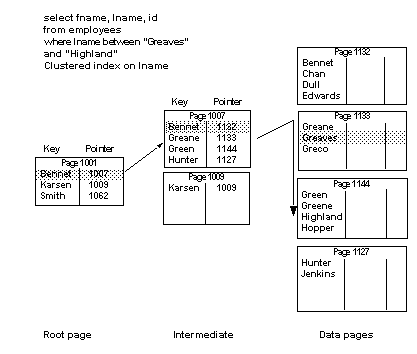To estimate the number of physical I/Os required for a range query using a clustered index on an allpages-locked table, the optimizer adds the physical and logical I/O for each index level and the physical and logical I/O of reading the needed data pages. Since data pages are read in order following the page chain, the cluster adjustment helps estimate the effectiveness of large I/O. The formula is:
Data pages = Number of qualified rows / Data rows per pageRange query cost = Number of index levels * 18 + Data pages/pages per IO * Cluster adjustment * 18 + Number of index levels * 2 + Data pages * 2
If a query returns 500 rows, and the table has 10 rows per page, the query needs to read 50 data pages, plus one index page for each index level. If the query uses 2K I/O, it requires 50 I/Os for the data pages. If the query uses 16K I/O, these 50 data pages require 7 I/Os.
The cluster adjustment uses the data page cluster ratio to refine the estimate of large I/O for the table, based on how fragmented the data page storage has become on the table’s extents.
Figure 22-3 shows how a range query using a clustered index positions the search on the first matching row on the data pages. The next-page pointers are used to scan forward on the data pages until a nonmatching row is encountered.
Figure 22-3: Range query on the clustered index of an allpages-locked table
